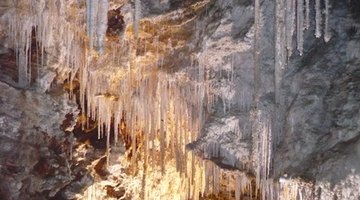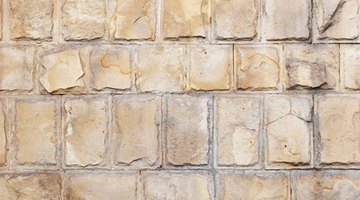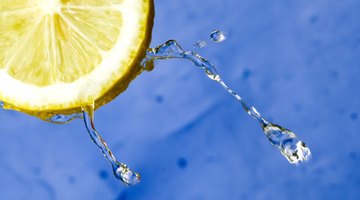What Is the Difference Between Limestone & Soapstone?
Table of Contents
Although limestone and soapstone are both rocks, there is little similarity between the two. The stones differ in formation, composition, hardness and, to a degree, use.

Before choosing one or the other for a home remodeling project, it would be wise to examine the varying strengths, weaknesses and possibilities of each.
Limestone Formation
Geology.com notes that limestone is a “sedimentary rock composed primarily of calcium carbonate in the form of the mineral calcite.” Limestone can be created as a biological sedimentary rock formed in “shallow, calm marine waters” from the shells and skeletons of dead marine life. Limestone can also be generated chemically from the “direct precipitation of calcium carbonate from marine or fresh water,” as well as through evaporation, seen in stalagmite and stalactite cave formations.
Soapstone Formation
Soapstone, on the other hand, is a metamorphic rock. It is created, explains Eon Stone, through “dynamo thermal metamorphism, which occurs at the areas where tectonic plates are subducted, changing rocks by heat and pressure, and without melting.” While limestone is primarily composed of calcium carbonate, soapstone chiefly contains talc, but may also include other minerals that can affect its hardness and color (e.g., chlorite, dolomite and magnesite).
Appearance

Limestone occurs in “soft earthy colors,” according to Eon Stone, ranging from “creamy beiges to deep browns, reds and blacks.” Because of the stone’s biological origins, limestone may contain fossils as well. Unfinished soapstone, however, is gray and feels “greasy or soapy,” according to Professor R.V. Dietrich’s GemRocks website. If other minerals are included in the stone, Eon Stone notes that the color of finished soapstone can be wide-ranging, including “gray, black, green, yellow, orange, rust, pink, bluish, white or combinations of these colors.”
Uses of Soapstone

There are two types of soapstone. The softer variety has a higher percentage of talc, and is used for carvings and sculptures. The harder variety, called steatite, is non-porous (unlike limestone) and heat resistant. This makes it useful for countertops, wet bars, sinks and vanities, fireplaces and hearths. According to Eon Stone, soapstone does not stain, and does not react to chemicals or acids, making it resistant to liquids such as lemon juice, vinegar or wine.
Uses of Limestone

Unlike soapstone, limestone shows the passage of time, needing periodic sealing, and, according to Eon Stone, “frequent dusting to prevent scratching.” It is also affected by acid (e.g., acid rain eventually damages limestone buildings). In spite of this, limestone does have a wide variety of uses including “floor tiles, countertops, fireplaces, columns and pool decks.” Crushed limestone is used as a construction material and, according to Geology.com, “powdered limestone is used as a filler in paper, paint, rubber and plastics.”
References
Writer Bio
Jessica McCombe has written for educational publishing companies since 2004. She has also produced articles at GradView.com for adults interested in the field of education. McCombe holds an M.A. in art history from the University of Pittsburgh, and a M.Ed. from The Ohio State University, and is a certified teacher for grades 1-8.
Photo Credits
- grotte image by Sirius91 from Fotolia.com
- grotte image by Sirius91 from Fotolia.com
- limestone bricks background image by starush from Fotolia.com
- Lemon juice image by Monika 3 Steps Ahead from Fotolia.com
- colonne 2 image by Nathalie P from Fotolia.com
More Articles



